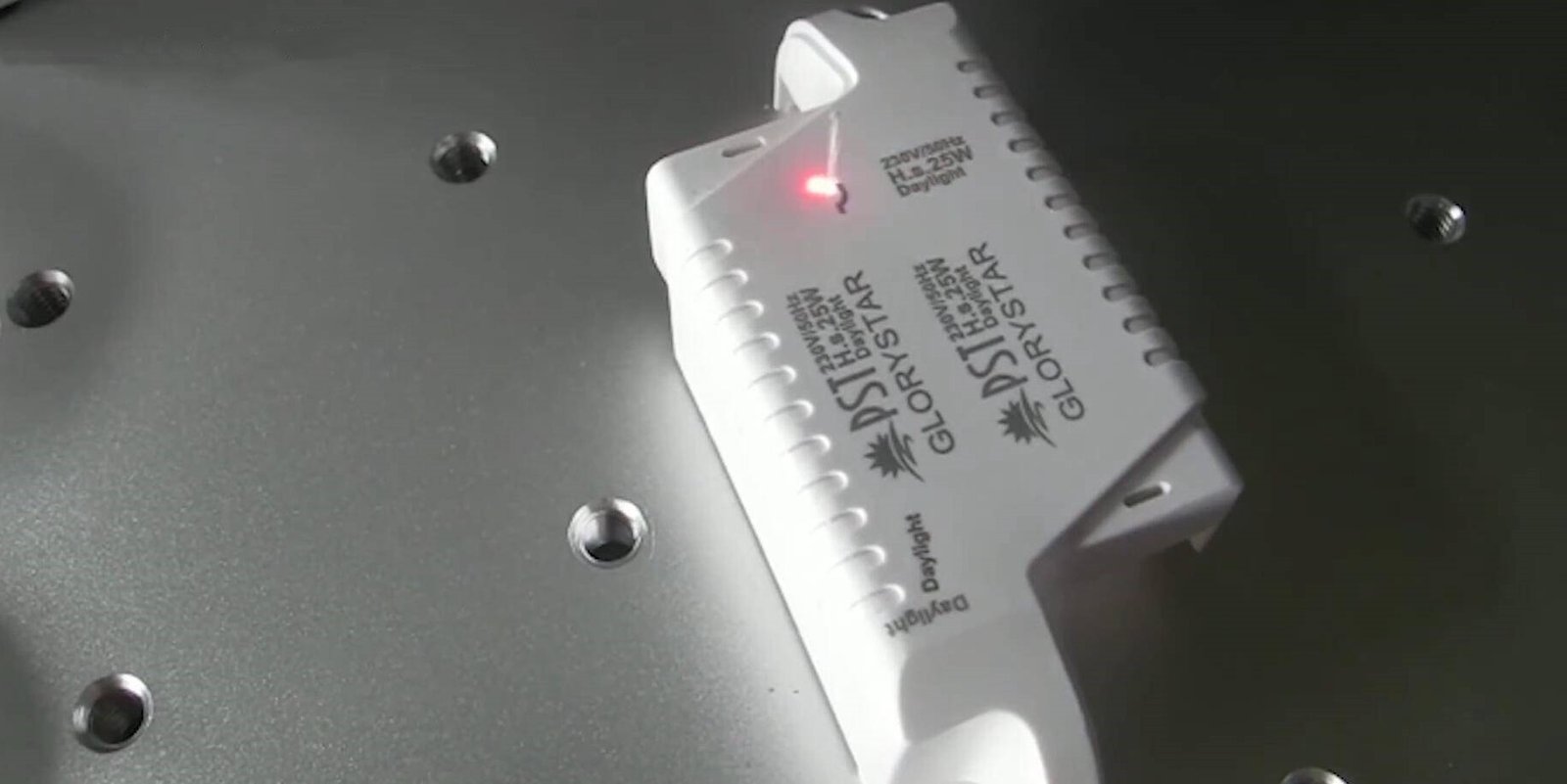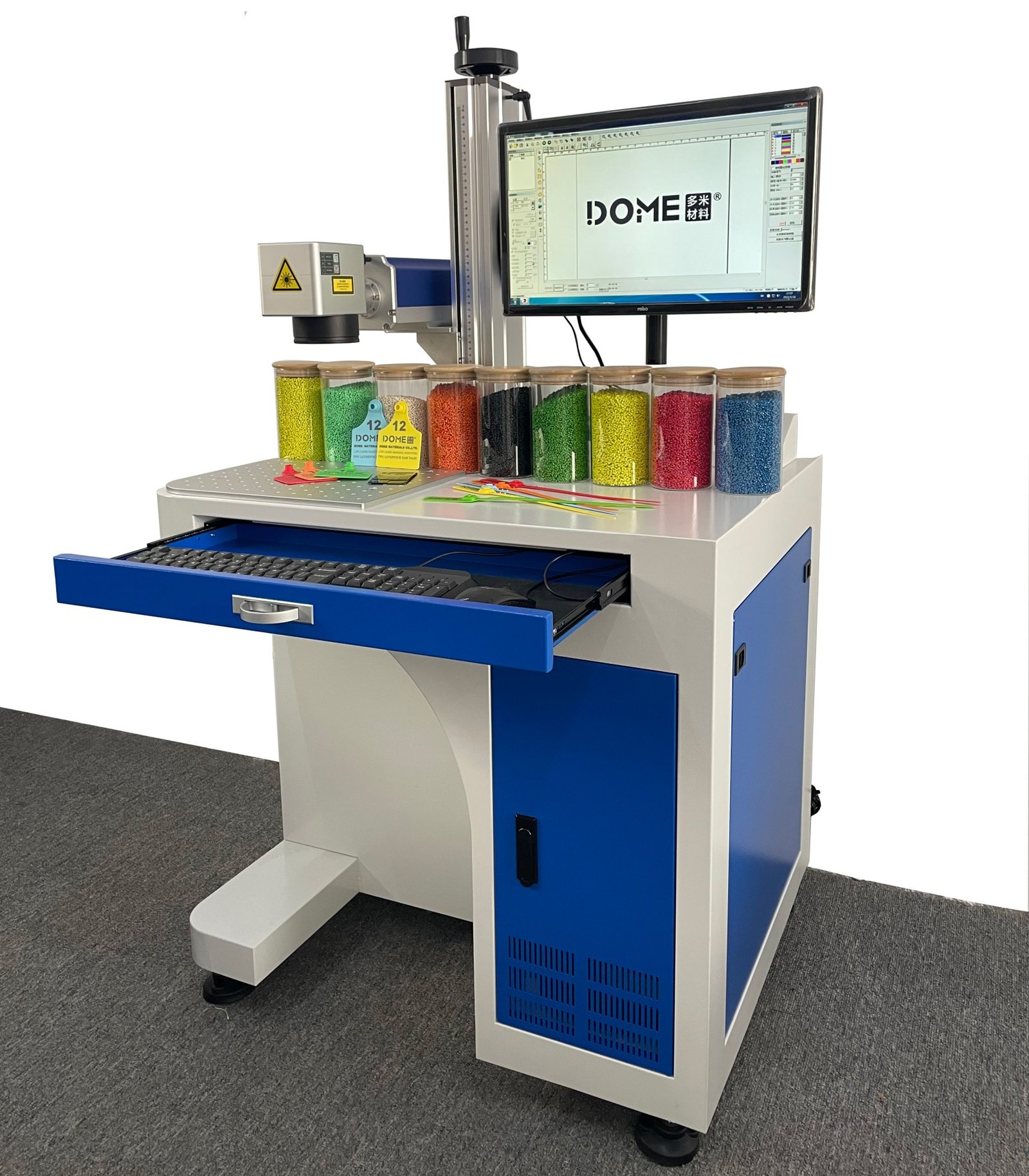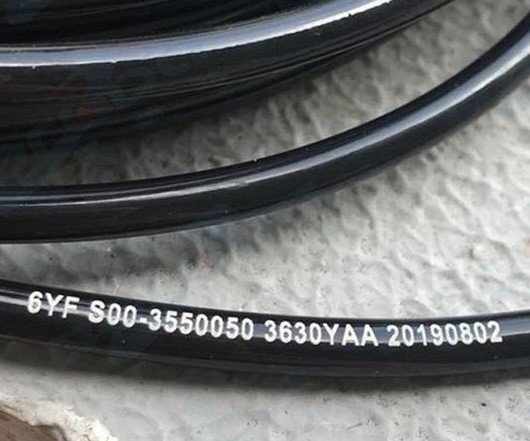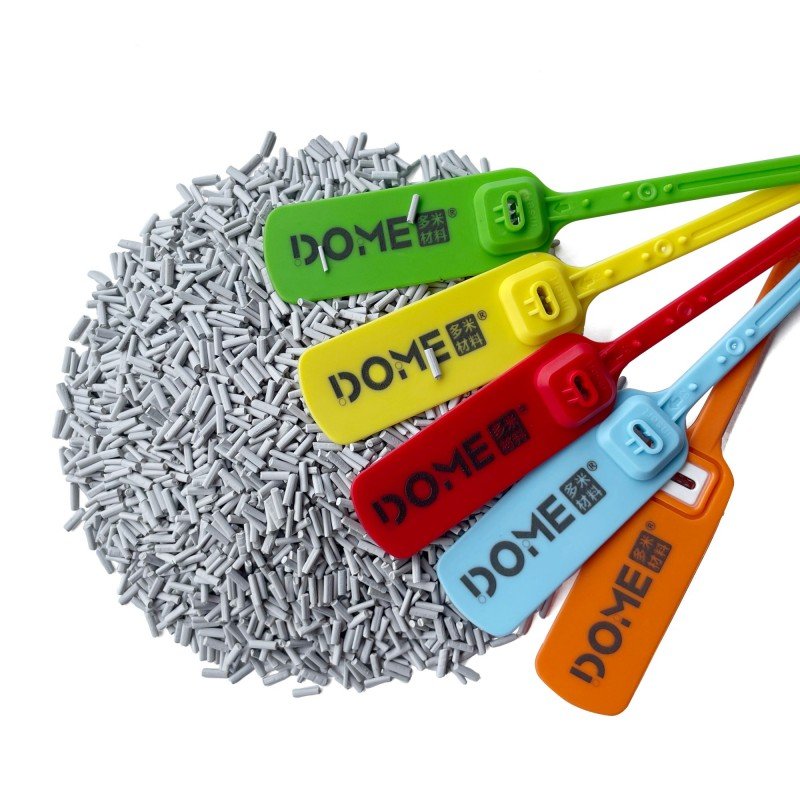Summary:
Laser marking machines have revolutionized modern manufacturing with their precision, efficiency, and versatility. From the electronics and automotive industries to the medical and packaging sectors, laser marking machines have found widespread applications, providing durable, high-quality, and cost-effective marking solutions. As technology continues to advance, the demand for miniaturized, efficient, and integrated laser marking systems is on the rise, paving the way for a future of high-quality and efficient marking processes.
This article provides an overview of laser marking machines, including their working principles, key components, advantages, and applications. It explores different types of laser machines, such as UV and fiber lasers, and offers guidance on selecting the right machine for specific needs. The article also examines how laser marking additives play a crucial role in achieving outstanding results when marking various materials like metals and plastics. Additionally, it highlights the top 10 recommended laser marking machine brands in the industry. Laser marking machines have revolutionized modern manufacturing with their precision, efficiency, and versatility, offering durable, high-quality, and cost-effective marking solutions across various industries.
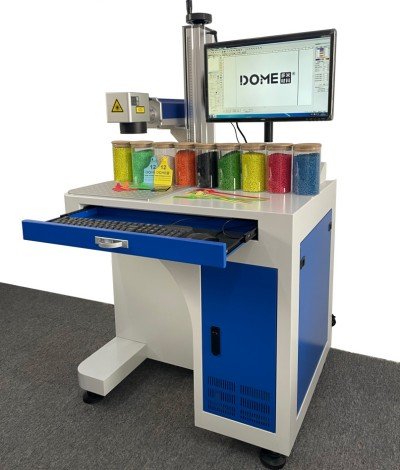
The working principle of a laser marking machine:
Laser marking is a sophisticated technique that involves the utilization of a powerful laser beam to generate enduring markings on a diverse range of materials such as metals, plastics, and glass. This process achieves its marking effect by causing the surface material to evaporate, thereby exposing the underlying layers. Additionally, it induces chemical or physical alterations in the surface material through the application of light energy or removes a portion of the material to form intricate etched patterns or text. The computer-controlled system expertly guides the laser beam, ensuring precise positioning to achieve the desired mark.
Overall, the working principle of a laser marking machine involves precise control of a high-powered laser beam to create permanent marks on a wide range of materials, providing high accuracy, speed, and versatility in marking applications.
Key components of the laser marking machine:
- Laser Source: The laser marking machine uses a high-powered laser source, typically a CO2, fiber, or diode laser. The laser emits a concentrated beam of light with a specific wavelength.
- The beam delivery system directs and controls the laser beam using mirrors and lenses. The system accurately positions and focuses the laser beam on the material to be marked.
- The specialized software equipped in the machine controls the laser parameters, such as power, speed, and frequency. The software empowers users to create and customize designs, texts, or patterns to be marked.
- Material Interaction: When the laser beam interacts with the material surface, it either melts, vaporizes, or changes the surface properties, depending on the material type. The material absorbs the laser energy, which causes localized heating and results in the desired mark.
- Marking Techniques: Laser marking machines use different techniques to create marks, including engraving, surface annealing, foaming, color changing, or ablation. The specific technique used depends on the material and desired mark quality.
- Safety Measures: Laser marking machines incorporate safety features, such as enclosures and safety interlocks, to protect operators from direct exposure to the laser beam.
The advantages of Laser Marking:
Laser marking technology, as a modern precision processing method, offers unparalleled advantages compared to traditional methods such as etching, electrical discharge machining, mechanical engraving, and printing. Let us explore some of these advantages:
- Non-contact and minimal thermal impact: Laser processing does not exert any force on the workpiece, ensuring no contact or cutting forces. This characteristic preserves the original precision of the workpiece. Additionally, laser marking exhibits excellent adaptability to various materials, allowing for the creation of highly detailed and durable markings on different surfaces.
- Superior spatial and temporal control: Laser technology provides great flexibility in terms of the material, shape, size, and processing environment of the workpiece. It is particularly suitable for automated processing and special surface treatments. Moreover, laser processing offers versatility, catering to the needs of both small-scale laboratory designs and large-scale industrial production requirements.
- Fine and secure markings: Laser marking enables the creation of fine lines ranging from millimeters to micrometers. The resulting markings are difficult to replicate or alter, making them crucial for anti-counterfeiting measures.
- Combining laser processing systems with CNC technology enables the development of highly efficient automated processing equipment. This technology allows for the easy creation of various texts, symbols, and patterns. The use of software simplifies the design and modification of marking patterns, meeting the demands of modern production with an emphasis on efficiency and fast-paced operations.
- Environmentally friendly: Laser processing is a clean and pollution-free technique. It is a highly environmentally friendly processing technology.
- Laser marking technology has found widespread applications across various industries, paving the way for high-quality, efficient, pollution-free, and cost-effective modern manufacturing. As the scope of laser marking applications continues to expand, there is an increasing demand for miniaturized, efficient, and integrated laser manufacturing systems.
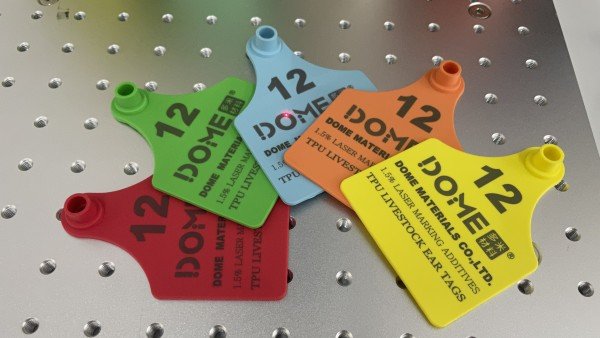
Types of Laser Machines:
Categorized based on their laser types:
- The CO2 Laser Marking Machine uses a CO2 laser as its source and is primarily designed to mark non-metallic materials such as wood, plastic, and rubber. The CO2 laser operates at a wavelength of 10.6 micrometers, falling into the infrared laser category.
- Semiconductor Laser Marking Machine: With a semiconductor laser as its source, this machine is suitable for marking metals and certain non-metallic materials like plastic and ceramics. The semiconductor laser typically operates at a wavelength of either 808 nanometers or 1064 nanometers, both of which are classified as infrared lasers.
- AG Laser Marking Machine: This machine primarily marks metals and some non-metallic materials like plastic and ceramics, utilizing a YAG (yttrium aluminum garnet) laser as its source. The YAG laser operates at a wavelength of 1064 nanometers, belonging to the infrared laser category.
- Fiber Laser Marking Machine: This machine utilizes a fiber laser as its source and is suitable for marking metals as well as non-metallic materials like plastic and glass. The fiber laser typically operates at a wavelength of 1064 nanometers, also classified as an infrared laser.
Additionally, categorizing laser marking machines based on the visibility of the laser results in ultraviolet, green, and infrared laser marking machines.
Categorized based on their laser wavelengths:
- UV laser marking machine: Operates at a wavelength of 335 nm.
- Green laser marking machine: Operates at a wavelength of 532 nm.
- Lamp-pumped YAG laser marking machine: Operates at a wavelength of 1064 nm.
- Semiconductor side-pumped YAG laser marking machine and semiconductor end-pumped YAG laser marking machine: Both operate at a wavelength of 1064 nm.
- Fiber laser marking machine: Operates at a wavelength of 1064 nm.
- CO2 laser marking machine: Operates at a wavelength of 10.64 um.
How to Select a Laser Marking Machine?
When selecting a laser marking machine, there are several factors to consider:
- Material Compatibility: Determine the type of material you will be marking, such as metals, plastics, ceramics, or glass. Ensure that the laser marking machine you choose is compatible with the specific material you will be working with.
- Marking Requirements: Consider the marking requirements, such as the desired marking depth, speed, and precision. Different laser marking machines have varying capabilities in terms of marking quality and speed, so choose one that meets your specific requirements.
- Laser Source: There are different types of laser sources, including fiber, CO2, and UV. Each type has its own advantages and is suitable for different materials. Research and select a laser source that is appropriate for your material and marking needs.
- Marking Area: Determine the size of the marking area you require. Consider the size of the parts or products you will be marking and ensure that the laser marking machine has a large enough marking area to accommodate them.
- Ease of Use: Look for a laser marking machine that is user-friendly and easy to operate. Consider the software interface and any additional features that may enhance the ease of use.
- Maintenance and Support: Consider the maintenance requirements of the laser marking machine and the availability of technical support. Ensure that there is a reliable support system in place to address any issues or concerns that may arise.
- Set a budget for your laser marking machine and consider the cost of the machine, along with any additional accessories or software that may be necessary.
By considering these factors, you can select a laser marking machine that best suits your specific needs and requirements.
UV laser marking machines & fiber laser marking machines are the most commonly used laser marking machines for plastic polymers.
The principle of the UV laser marking machine:
During UV laser processing, the reaction mechanism achieves photochemical ablation by relying on the laser energy to break the bonds between atoms or molecules. This process causes the atoms or molecules to transform into small molecules that vaporize and evaporate. The focused spot is extremely small, and the thermal impact on the processing area is minimal, allowing for ultra-fine marking and marking on special materials.
The UV laser marking machine mainly uses a cold light source with a wavelength of only 355nm, and the focused spot diameter is smaller. Various materials have a high absorption rate for ultraviolet light, and the thermal impact is also small (negligible), resulting in a more exquisite and precise marking effect. UV laser marking is ideal for applications that require high contrast or minimal product damage. It can provide delicate solutions for identification information in any industry and plays an especially important role in the identification industry.
Characteristics of the UV Laser Marking Machine:
- Exceptionally Small Focus Spot: The minimum size of the spot of the focused UV laser can reach 10UM, with a small processing heat-affected zone. Therefore, it can be ideally used for ultra-fine marking, special material marking, especially suitable for food, medicine packaging material marking, punching, high-speed division of glass materials, and complex graphics on silicon wafers and other application fields.
- Wide Material Compatibility: The machine is capable of processing a wide range of materials, not just limited to copper, making it versatile for various applications, such as glass, plastic, wood, leather, paper, ceramics, and more.
- Superior Beam Quality: The machine delivers excellent beam quality, with a smaller focus spot that allows for ultra-fine marking.
- Broad Range of Applications: Due to its extremely small heat-affected zone and lack of thermal effects, the machine can be used on a wide range of materials without the risk of scorching or burning.
- High Speed and Efficiency: The UV laser marking machine is recognized for its fast marking speed and high operational efficiency. Despite its compact size, the machine offers stable performance and low power consumption, making it a cost-effective marking solution.
- Stable work performance: It can automatically carry out operations such as rotation marking, and supports the use of various image formats and SHX font libraries.
- Damage-free marking: The UV laser marking machine uses cold laser technology with a wavelength of 355nm, allowing for cold marking. This method ensures that heat damage is kept to a minimum. Consequently, the generation of soot and burrs is reduced, and the surface of the material remains unharmed. It is particularly suitable for marking materials such as glass and plastic polymer composites.
The main disadvantages of UV laser machines:
- UV crystals easily absorb dust: The UV crystals in UV laser machines easily absorb dust within the cavity, leading to a decrease in power, and affecting the machine’s work efficiency and lifespan.
- High maintenance cost: The maintenance cost of UV laser machines is high, requiring regular replacement of UV crystals and other consumables, which increases the usage cost.
- High requirements for the working environment: UV laser machines require a high-standard working environment. It needs to be dry and dust-free, otherwise, it can easily affect the output quality and lifespan of the laser.
- Threat to the operator’s safety: The wavelength of UV lasers is short, posing a significant risk to the operator’s eyes. Appropriate protective measures need to be taken.
- High price: The price of UV laser machines is higher than other types of laser machines. For some small businesses and individual users, the purchase and usage costs are high.
Applications of the UV Laser Marking Machine:
The UV laser is mainly low-power, and its series of products mainly include 1.5W, 3W, 5W, 8W, and 10W. The power is mainly customized according to the requirements of the processing material, and the processing effect and power are closely related. The application range includes fine processing of high-end markets such as cosmetics, pharmaceuticals, food, and other polymer materials, flexible PCB board marking, scribing, silicon wafer micro-hole, blind hole processing, LCD liquid crystal glass two-dimensional code marking, glassware surface punching, metal surface coating marking, plastic buttons, electronic components, gifts, communication equipment, building materials, etc.”
- Electronics Industry: The UV laser marking machine is used for marking various electronic components like printed circuit boards, semiconductors, IC chips, etc.
- Medical Industry: It is used for marking medical devices, surgical instruments, and pharmaceutical packaging with important information such as batch numbers, manufacture dates, and barcodes.
- Cosmetics Industry: The machine is used for marking logos, manufacturing details, and other information on cosmetic packaging.
- Food & Beverage Industry: It is used for marking expiration dates, batch numbers, and barcodes on food and beverage packaging.
- Glass Industry: The UV laser marking machine is used for engraving designs, logos, and text on glass products.
- Plastics Industry: It is used for marking various plastic materials without causing any damage or deformation.
- Jewelry Industry: The machine is used for engraving intricate designs on precious metals and gemstones.
- Automotive Industry: It is used for marking part numbers, serial numbers, and other information on automotive parts.
- Solar Industry: The UV laser marking machine is used for scribing thin films in solar panels.
Fiber Laser Marking Machine:
The fiber laser marking machine is the most favored technology in laser marking systems because of its adaptability, minimal upkeep, and zero consumable requirements. Unlike UV laser, it employs an optical fiber infused with a rare earth element as a laser source, which allows it to mark with greater intensity. It offers the optimal industrial solution for product identification and traceability.
The Working Principle of Fiber Laser Marking Machine
The working principle of the fiber laser marking machine mainly utilizes the high thermal energy of the laser to change the surface form and texture of the marked material, thereby leaving a permanent mark.
Specifically, the working principle of the fiber laser marking machine can be divided into the following steps:
- Laser Generation: The fiber laser marking machine has an internal laser generator. By injecting electric energy, the fiber inside the laser generator generates a laser.
- Laser Focusing: The generated laser is focused into a high-energy light spot through a series of optical systems.
- Laser Marking: The high-energy light spot is irradiated on the surface of the marked material, instantly melting or vaporizing its surface to form a tiny trace, which is what we call “marking”.
- Computer Control: The entire marking process is controlled by a computer. By changing the movement path and focus position of the laser, various different patterns and texts can be formed on the surface of the object.
Through the above steps, the fiber laser marking machine can perform accurate, fast, and clear marking on the surface of various materials.
Classification of Fiber Laser Marking Machines
The classification of fiber laser marking machines can mainly be made from the following aspects:
- By Power: They can be divided into low-power fiber laser marking machines and high-power fiber laser marking machines. The low-power ones are suitable for fine marking with high precision requirements, while the high-power ones are suitable for deep marking and engraving.
- By Working Mode: They can be divided into continuous fiber laser marking machines and pulsed fiber laser marking machines. The continuous mode has a high working efficiency and is suitable for mass production; the pulsed mode has high precision and is suitable for marking with high precision requirements.
- By Application Field: They can be divided into general-purpose fiber laser marking machines and specialized fiber laser marking machines. The general-purpose ones have a wide range of applications and can meet most marking needs; the specialized ones are optimized for a specific application field.
- By Laser Source: They can be divided into domestic fiber laser marking machines and imported fiber laser marking machines. The domestic laser source has a lower cost and a higher cost performance; the imported laser source has higher stability and marking quality.
- By Mechanical Structure: They can be divided into desktop fiber laser marking machines, portable fiber laser marking machines, flying fiber laser marking machines, etc. Different mechanical structures are suitable for different working environments and application needs.
Advantages of Fiber Laser Marking Machines:
- High Precision: Fiber laser marking machines use advanced laser technology, which can perform fine marking on various materials, meeting various complex and detailed marking requirements.
- High Efficiency: Fiber laser marking machines have fast marking speeds and high efficiency, which can greatly improve production efficiency.
- Long Lifespan: Fiber laser marking machines have a long service life, generally up to 100,000 hours, which is much higher than other types of laser marking machines.
- Energy Saving and Environmental Protection: Fiber laser marking machines have low power consumption, making them energy-saving and environmentally friendly marking equipment.
- Low Maintenance: Fiber laser marking machines do not require any maintenance, saving maintenance costs.
- Wide Adaptability: Fiber laser marking machines can mark on various metals and non-metal materials, showing strong adaptability.
- High Safety: During the operation of the fiber laser marking machine, there is no need to touch the object or use chemical substances, ensuring high safety.
- No Need for Consumables: Fiber laser marking machines do not require any consumables during the marking process, reducing operating costs.
Therefore, fiber laser marking machines, with their advantages of high precision, high efficiency, long lifespan, energy saving and environmental protection, low maintenance, wide adaptability, high safety, and no need for consumables, are widely used in various industries, such as electronics, automobiles, medical, metal processing, jewelry, clothing, etc.
Applications of Fiber Laser Marking Machines
Due to their high precision, high speed, and good stability, fiber laser marking machines are widely used in various industries. Below are some of the main application fields:
- Electronics Industry: Marking on products such as semiconductors, integrated circuits, electronic components, etc., such as production dates, serial numbers, barcodes, etc.
- Mechanical Manufacturing: Marking on products such as parts, molds, bearings, etc., such as product models, specification parameters, production batches, etc.
- Automotive Industry: Marking on parts such as engines, wheels, car glass, car keys, etc.
- Medical Devices: Marking on products such as surgical instruments, medical devices, medical equipment, etc., such as product codes, usage instructions, production dates, etc.
- Jewelry Industry: Marking on products such as gold and silver jewelry, watches, glasses, etc., such as brands, models, materials, etc.
- Packaging Industry: Marking on the packaging of products such as food, beverages, drugs, etc., such as production dates, shelf life, batch numbers, etc.
- Metal Processing: Marking on various metal materials, such as steel, aluminum, copper, etc.
- Other Industries: Such as marking on various non-metallic materials such as plastic products, ceramic products, wood products, etc.
UV Laser Marking Machines and Fiber Laser Marking Machines are designed for different material solutions
Fiber laser engraving machines are primarily used for engraving and offering solutions for the metal marking industry. These machines are capable of marking, engraving, and etching on all types of metallic materials (see the difference between engraving and marking). Furthermore, the UV laser is engineered as a functional solution for marking plastics and glass. This UV laser machine has the capacity to engrave a wide variety of materials, ranging from metal to paper. Refer to the list of materials that these two machines can engrave and mark.
| Category | UV Laser Marking Machine | Fiber Laser Marking Machine |
| Applicable materials | Some Metals All Plastics All Glass Some stone Paper Leather Fruit Wood Ceramics Clothing | All Metals Plastics Some Stones Some Leather Some Paper Wood Some Garments |
UV Laser Marking Machine VS Fiber Laser Marking Machine:
UV and fiber laser marking machines are common laser marking technologies. UV Laser Marking Machine is suitable for marking and engraving non-metallic materials, while fiber laser marking machine is suitable for metallic materials. When purchasing a laser marking machine, factors such as performance parameters, stability, maintenance cost, and after-sales service should be considered to meet the needs of marking and engraving various products.
The subsequent table delineates the primary differences and comparisons between the two, enabling us to select the laser marking machine that is most suitable for your needs.
| Category | UV Laser Marking Machine | Fiber Laser Marking Machine |
| Laser source & Wavelength | Solid-state UV laser, 335nm | Using rare earth glass fiber as the gain medium, 1064nm |
| Processing Method | The UV laser marking machine utilizes cold processing, which is a chemical processing method. On the other hand, the laser chemical processing method involves using a laser to deeply process products and materials. | The Fiber laser marking machine utilizes a laser for physical marking. This method primarily processes the surface of products and materials and is classified as a thermal processing technique. |
| Application Field | UV laser marking machine: especially suitable for the high-end market of fine processing. Such as: 1. Good marking effect on the surface of high molecular materials packaging bottles such as cosmetics, pharmaceuticals, and additives, strong cleaning power, better than inkjet coding, no pollution; 2. Marking and scribing of flexible PCB boards; the processing of silicon chip micropores and blind holes; 3. QR code marking on LCD glass, drilling on glass utensils surface, coating marking on the metal surface, plastic buttons, electronic components, gifts, communication equipment, building materials, etc. | The Fiber laser marking machine is basically suitable for laser marking on various metal surfaces. Due to the heat generated by its beam, it is not suitable for high-precision marking of special materials. It is widely used in on-site graphic and text marking of integrated circuit chips, computer accessories, industrial bearings, watches, electronic communication products, aerospace components, various automotive parts, household appliances, hardware tools, molds, wires and cables, food packaging, jewelry, tobacco, military, and batch production line operations. |
| Application Scope | The UV laser marking machine is suitable for marking on some special materials, such as glass, ceramics, plastics, etc. | The fiber laser marking machine suits various materials such as metal, plastic, rubber, etc. |
| Device prices and maintenance difficulty | The UV laser marking machine prices are relatively high, and maintenance is more complicated. | Fiber laser marking machine has a lower price and is easier to maintain. |
| Marking Color | If you want to laser mark white color on colored plastic polymer, we recommend you use a UV laser marking machine | If you want to laser mark black on light or colored plastic polymers, or white on black polymers, we recommend fiber laser marking machines |
In short, fiber laser marking machines and UV laser marking machines have their respective pros and cons. When selecting a machine, one should consider its actual requirements. For high precision and high-definition marking of materials like metal and plastic, a fiber laser marking machine is a good choice. Meanwhile, a UV laser marking machine is suitable for marking some special materials. Additionally, factors such as equipment price and maintenance difficulty should be taken into account to ensure long-term stable operation of the equipment.
What should be paid attention to in plastic laser marking?
When doing laser marking on plastic, there are several things to pay attention to:
- Material Type: Not all plastics react the same way to laser marking. Some may melt or deform, so it’s important to know the type of plastic you’re working with.
- Laser Settings: Different plastics may require different laser settings. Factors like power, speed, and frequency can all affect the quality of the marking.
- Ventilation: Laser marking can produce fumes, especially with certain types of plastic. Proper ventilation is important for safety.
- Quality of the Laser: The quality of the marking can be affected by the quality of the laser machine itself. A high-quality machine will produce better results.
- Safety: Always follow safety procedures when operating a laser marking machine. This includes wearing protective eyewear and keeping the work area clean and free of flammable materials.
- Testing: Before marking a large batch of plastic items, it’s a good idea to do some test markings first to make sure the settings are correct and the result is as desired.
Wide application of plastic laser marking:
Laser marking on plastic is widely used in a variety of industries due to its precision, permanence, and efficiency. Here are some of its applications:
- Electronics Industry: Laser marking is used for marking electronic components such as circuit boards, connectors, switches, and housings.
- Medical Industry: It’s used for marking surgical instruments, medical devices, and pharmaceutical packaging with batch numbers, expiry dates, and other important information.
- Automotive Industry: Laser marking is used for marking part numbers, serial numbers, and barcodes on various plastic parts.
- Packaging Industry: It’s used for marking food and beverage packaging with expiration dates, batch numbers, and other important information.
- Consumer Goods: Laser marking is used for marking various consumer goods including toys, appliances, and utensils.
- Aerospace Industry: It’s used for marking various parts and components for traceability and identification.
- Telecommunications Industry: Laser marking is used for marking connectors, cables, and other components.
In all these applications, laser marking provides a non-contact, abrasion-resistant, permanent method of marking that can withstand harsh conditions and last for the lifetime of the product.

Why does plastic laser marking need laser marking additives?
Plastic laser marking necessitates the use of laser marking additives to enhance the visibility and contrast of the marks. These additives assist in absorbing more laser energy and establishing a distinct contrast between the marked area and the surrounding material. Without these additives, the marks may appear faint or indistinct, rendering them unsuitable for certain applications.
The plastic material itself may not efficiently absorb the laser energy, resulting in uneven or incomplete marking. Laser marking additives aid in absorbing the laser energy and creating a contrast between the marked area and the surrounding material.
Various types of laser marking additives are available, each possessing distinct properties and suitable for different types of plastic.
In conclusion, laser marking additives are crucial for achieving high-quality laser marking on plastic materials. They enhance the visibility and contrast of the marking, ensuring that the marked information is clear and legible.
Why Choose DOME™ laser marking Additives?
There are several reasons why you might choose DOME™ laser marking additives:
- High Contrast and Visibility: DOME™ laser marking additives are designed to provide excellent contrast and visibility when marked with a laser. This ensures that the marking is clear and legible, even on different types of plastic materials.
- Wide Compatibility: DOME™ laser marking additives are available for a wide range of plastic materials, including polyethylene, polypropylene, ABS, TPU, PVC, POM, PBT, and more. This allows you to find the right additive for your specific application and plastic material.
- Durability and Resistance: DOME™ laser marking additives are formulated to withstand harsh environmental conditions, including UV exposure, temperature variations, and chemical resistance. This ensures that the marking remains durable and readable over time.
- Versatility: DOME™ laser marking additives can be used in various application methods, including mixing with the plastic material during injection molding, or plastic pelletizing modification. This flexibility allows you to choose the most suitable method for your production process.
- Technical Support: DOME™ laser marking additives are backed by technical support. This includes guidance on product selection, application techniques, and troubleshooting assistance. Having reliable technical support can help ensure successful and efficient laser marking processes.
- Cost-effective: DOME™ Materials is the top producer of laser marking additives in China, offering a competitive factory price and fast delivery.
In general, opting for DOME™ laser marking additives can offer you top-notch, long-lasting, cost-effective, and easily noticeable markings on plastic materials. Their compatibility, versatility, and technical assistance make them a dependable option for diverse industries and applications.
Top 10 recommended laser marking machine brands:
GRAVOTECH: https://www.gravotech.com/
VIDEOJET: https://www.videojet.com/us/homepage.html
ROFIN: https://www.lasersystemseurope.com/company/rofin
HAAN’s LAASER: https://www.hanslaser.net/
HGTECH: https://www.hglaserglobal.com/
TELESIS: https://telesis.com/
TROTEC: https://www.troteclaser.com/en/
SIC MARKING: https://www.sic-marking.com/
KEYENCE: https://www.keyence.com/products/marker/laser-marker/

